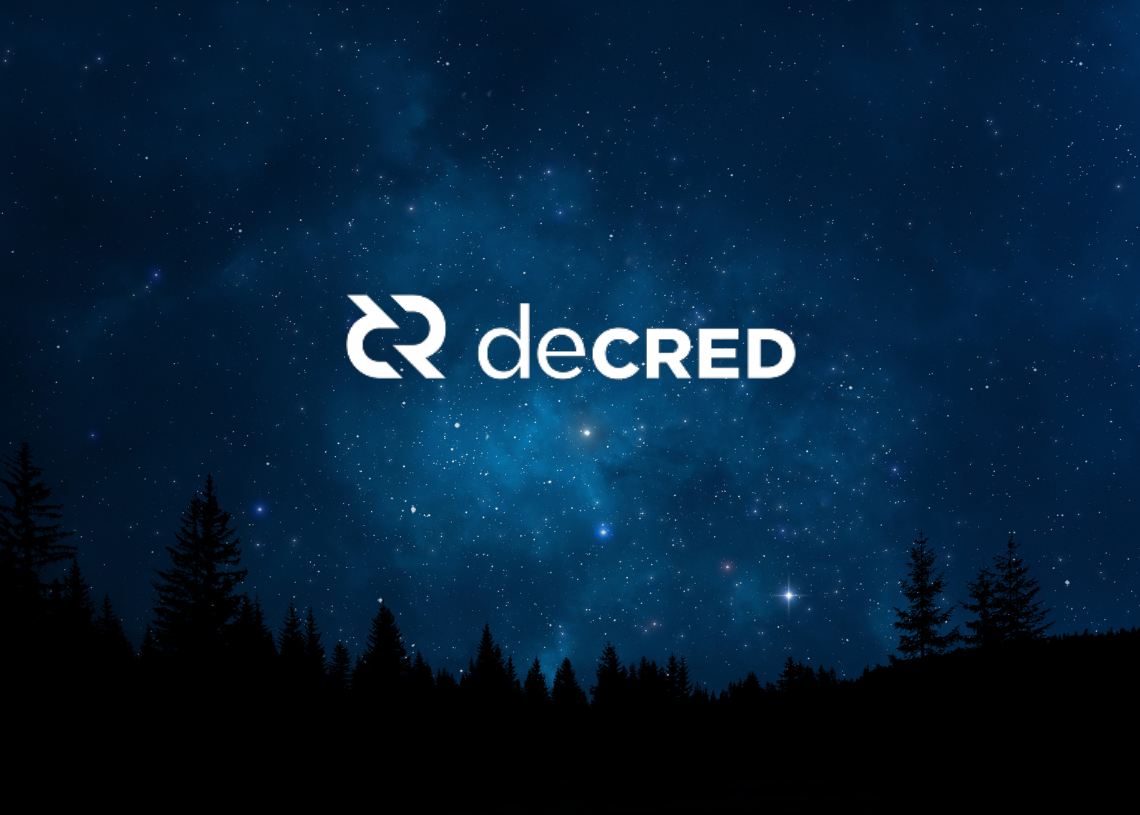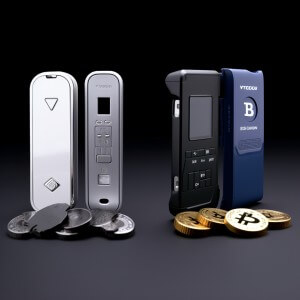Cryptocurrency works using blockchain technology. The blockchain is a public digital ledger of various transactions maintained by a network of computers that cross-checks every transaction making it difficult for any transaction on the blockchain to be altered or hacked. Each block of the transaction is chained using a hash. Cryptocurrency is a significant concept that we can not completely cover in this article; several other articles can guide you through your crypto journey as a beginner.
However, this article explains the concept of the Decred wallet. It covers Decred as a digital currency. It also describes the company and why Jake created the coin. After reading this article, you will have a better understanding of the intention of Decred, its technological architecture, and its history.
Also Read:
• Decred Wallet: Finest Crypto Wallets For 2022
What is Decred?
Decred (DCR) is a digital currency designed to solve a scalability problem that faced bitcoin. Suppose you are familiar with the cryptocurrency ecosystem. In that case, you will remember Bitcoin existed alone until a huge rift happened in the crypto ecosystem that led to the hard fork of bitcoin and bitcoin cash.
To prevent this type of rift from happening in the future, the Decred network was designed. A hard fork can not occur in Decred, except most stakeholders agree to the forking. It is decentralized and self-governing compared to Bitcoin. Its unique decentralized approach has carved Decred a spot at the top of a very competitive cryptocurrency market.
Decred works by combining proof-of-work proof-of-stake consensus and relies strongly on community and open governance. It works to prevent a small group of people from having total control over the Decred community. The project funds its growth from a decentralized treasury.
In the Decred community, the Proof-of-Work miners verify transactions on the blockchain while the proof-of-stake stakers propose and vote on network upgrades. Dec uses a different system called POLITEIA to tie its ecosystem together. Stakeholders vote, develop new initiatives and change protocol codes. Let’s briefly compare Bitcoin and Decred for a better understanding.
Bitcoin and Decred (DCR)
- Purpose: Bitcoin (Digital money). Decred (Digital money + governance).
- Technology: Bitcoin uses proof of work. Decred uses both proof-of-work and proof-of-stake.
- Market capitalization: Bitcoin has a market cap of $93 billion. Decred has a market cap of $160million.
- Year of release: Bitcoin was created in January 2009. Decred was completed in February 2016.
Brief history of Decred
Decred was created following a Memcoin2 crypto proposal in April 2013. it was proposed on a Bitcointalk forum. The development of Decred officially began in February 2014, and it was based on the BTCsuite codebase. However, you should note that Decred’s code is based on bitcoin; Decred is not a bitcoin fork.
The idea of Decred was born so users could temporarily lock their coins or tokens in exchange for a reward. These users are known as stakeholders. The code used in the design of Decred was built on the Btcsuite codebase by company 0. However, Decred is not a bitcoin fork despite sharing some of the bitcoin fundamental codes.
Furthermore, Decred eventually hit the exchange market in February 2016, and it has since then been traded continually in the crypto market. Decred used an exciting way during the launch for its airdrop and pre-mine process. It established a network of potential contributors to its ecosystem and rewarded the early contributors for their role before launch. This way, there was proper decentralization and fairness in distributing rewards.
The Brains behind Decred
Decred dates back to April 2013, when a developer going by the handle TacoTime replied to a topic on Bitcointalk claiming to be working on a new cryptocurrency. Shortly after, TacoTime created a new thread, presenting a whitepaper named “Memcoin2 (MC2): A Hybrid Proof-of-Work, Proof-of-Stake Crypto-currency” in response to a pledge to release a technical specification of the proposal. The proposal was designed utilizing BTCD, the platform created by Decred’s current developers. These developers also extended and incorporated the ideas of both Litecoin and Peercoin.
Decred was announced to remedy Bitcoin’s stated flaws on December 12, 2015, including inefficient governance and capture by core developers, a lack of development financing, and excessive miner power over the Bitcoin network. “An open, progressive, and self-funding coin with a community-based governance mechanism built into its blockchain,” according to the plan. A hybridized proof-of-work proof-of-stake (PoW/PoS) consensus mechanism was at the center of the project, intending to balance the PoW miners and PoS voters.
The Decred mainnet went live on February 8, 2016, along with the Decred constitution, a set of principles and standards that give users a clear understanding of the project’s social contract. At the time of debut, 8% of the entire supply was pre-mined, with 4% going to the developers and 4% to the 2,972 persons who joined up.
Decred is the first blockchain to successfully conduct a direct on-chain user-activated consensus vote in June 2017. Decred’s Politeia proposal system went live in October 2018, allowing Decred users and stakeholders to propose, discuss, agree on, and fund new projects, initiatives, and consensus change off-chain. SPoliteia has now been utilized for various governance decisions, such as research, bug bounties, and public relations. Privacy enhancements, Lightning Network compatibility, an extended communications plan, and a decentralized exchange are current Politeia developments.
How Decred works
Decred stakeholders technically make sure the blockchain’s consensus rules are enforced. Decred uses the hybrid of Proof of Work (PoW) and Proof of Stake (PoS) system gotten from Memcoin2. This hybrid enables users, popularly known as stakeholders, to lock their coins to participate in a lottery.
You should note that Decred’s code was based on BTCsuite. BTCsuite is an alternative full-node Bitcoin implementation. The language was written in Go.
Decred uses a unique hybrid Proof-of-Work (PoW)/Proof-of-Stake (PoS) system with the Politeia governance platform to address centralization, funding, and governance issues. PoW works similarly to Bitcoin under Decred’s hybrid system. However, miners only get 60% of the block reward. PoS voters control the quality of the miners’ work, limiting the miners’ power, putting power in the hands of coin holders, and safeguarding the network with 30% of the Decred block reward. The remaining 10% of the block reward goes to the Treasury, used to fund development and operations. Decred’s long-term viability is ensured by its self-funding component.
Decred’s governance tools, notably Politeia, are its most potent differentiator. Everyone is welcome to offer views and ideas informally on Politeia’s discussion platforms and social media, but those who contribute through PoS make formal choices in Politeia. Furthermore, Decred holders vote in PoS elections by staking (locking) funds in exchange for tickets. Tickets grant voting rights, and voting on tickets determines:
- Changes to the consensus rule (on-chain)
- Validation of the work of PoW miners
- Project funding from the Treasury (Dev work, communications, events, research, etc.)
- Governmental policy (Constitutional amendments, procedures, standards, etc.)
DCR’s current price
With a 24-hour trading volume of USD 10,803,920, the current Decred price is USD 110.56. Our DCR to USD pricing is updated in real-time. In the previous 24 hours, Decred has gained 3.50 percent. With a live market cap of USD 1,493,393,770, CoinMarketCap now ranks #87. There are 13,506,955 DCR coins in circulation, with a maximum supply of 21,000,000 DCR coins.
If you’re looking for a place to buy Decred, the best cryptocurrency exchanges to use right now are Binance, Mandala Exchange, OKEx, Huobi Global, and KuCoin.
Decred mobile wallet
Crypto assets on an exchange wallet usually require a wallet to make trades; Decred, like other cryptocurrencies, needs a wallet to make transactions.
Core software required to use Decred
- Decredition: A graphical UI wallet for Windows, macOS, and Linux.
- Mobile Wallets: Decred mobile wallets available for both Android and ios platforms.
- Command-line app suite: A cross-platform, automatic installer/updater for the command-line applications.
Examples of hardware wallets
Source: AtoZmarkets
- Trezor: Trezor is a hardware wallet supported by both Decridition and Exodus wallets.
- Ledger Live: Ledger Live is a web-based wallet secured by the ledger hardware wallet.
Third-party wallets
1. Exodus: Exodus is a friendly, all-in-one application to secure, manage and exchange blockchain assets.
Source: Google
- Exodus: Exodus is a friendly, all-in-one application to secure, manage and exchange blockchain assets.
- Coinomi: Coinmoni Store, manage, and exchange Bitcoin, Ethereum, and over 500 other blockchain assets in a secure environment.
- Ownbit: Ownbit is a decentralized bitcoin wallet. Your private keys are yours to keep.
- AnyBit: Any bit is a mobile wallet for Android and iOS that includes price and news tracking capabilities.
- Atomic: Atomic Multi-asset desktop wallet with built-in exchange and decentralized order book via non-custodial atomic swaps.
- Guarda: Guarda works on the web, desktop, and mobile multi-currency wallets represent Guarda Guarda.
- Evercoin: Evercoin is a mobile cryptocurrency wallet with built-in trading that is non-custodial.
- Trust wallet: Trust wallet is a wallet You Can Trust. For Android and iOS, Trust Wallet is a safe multi-coin wallet.
Source: Google
Best Decred wallets
Because Decred contains protocol-level governance and staking structure, it’s critical to use the correct DCR wallet if you wish to use these features. Not all Decred wallets support DCR staking for technical reasons, and even fewer support participating in the network’s governance.
Some wallets that don’t support Decred’s governance and staking features, on the other hand, can be safer because they keep your funds entirely disconnected from the internet. We’ll go over the finest Decred (DCR) wallets in this Decred (DCR) wallet guide.
1. Ledger Nano S is the first in a series of ledgers (hardware wallet)
The Ledger Nano S is a hardware wallet that lets users safely store virtually all significant cryptocurrencies on one device.
Ledger Nano S
Source: Google
The Ledger Nano S is a hardware wallet that retains all private keys in a secure offline environment, guaranteeing that they are never accessible to connected devices.
Pros
- It’s compatible with more than 1,000 different cryptocurrencies.
- An industry-leading security
- Customer service is outstanding.
Cons
- Security comes at a price (£55/$79).
- There is no staking support.
- It can take a long time to send and receive DCR.
The Ledger Nano S can also operate as a two-factor authentication device for many websites, in addition to offering probably essential security of any consumer-grade hardware wallet.
Furthermore, the Ledger Nano S is far more than a simple Decred wallet, with over 80 apps available for download and more being released regularly.
The Ledger Nano S, on the other hand, delivers all of the fundamental capabilities you’d expect from a wallet as a Decred wallet. This includes the ability to generate addresses, send, and store your Decred safely (DCR).
2. Coinomi (mobile wallet)
Since its launch in 2014, Coinomi has become one of the most popular multi-asset wallets for mobile users. However, besides being available for iOS and Android, Coinomi is a desktop client for Linux, macOS, and Windows.
Pros
- Support for over 1,500 digital assets, including 125 native blockchains
- Staking support for several cryptocurrencies
- Available on most platforms
Cons
- No DCR staking
- Large download size
- Overkill for many light users
3. Decred Web Wallet
Source: Google
Decred Web Wallet is a browser-based wallet created exclusively for Decred users. You can store, spend, and receive DCR from virtually any device because the Decred Web Wallet can be accessed using any internet browser.
Pros
- The user interface is simple.
- Features for recovering and importing wallets
Cons
- It can be accessed from any device that has a web browser.
- There is no customer service.
- Functionality is minimal.
- There is no staking support.
4. Exodus wallet (desktop wallet)
Despite being created in 2016, Exodus has managed to gain a substantial following as one of the most appealing cryptocurrency wallets accessible today.
Pros
- It works with a wide range of digital assets.
- Both desktop and smartphone versions are available.
- Portfolio management tools that are useful
Cons
- There is no support for staking, and mobile versions have limited functionality.
- Decred must be enabled manually.
5. Cobo wallet (mobile wallet)
Cobo is a new multi-asset wallet that aspires to be your one-stop shop for all things Proof-of-Stake (PoS) related. It was debuted in the first part of 2018 and has since grown in popularity.
Pros
- Cobo is a multi-wallet that can handle a wide range of assets.
- Android and iOS smartphones are supported.
- When transmitting assets to other Cobo wallet users, transfers are free.
Cons
- Some features require KYC verification.
- There is currently no PC version available.
- Users in the United States are subjected to severe restrictions.
6. Decrediton (desktop wallet)
Source: GitHub
Decrediton, as the official desktop client for Decred, is perhaps the most widely used Decred wallet. Decrediton is usually the first wallet to implement new features because the Decred team developed it.
Pros
- The Decred developers are in charge of keeping the site up to date.
- Supports staking and governance voting in the DCR
Cons
- Extremely simple to use
- If you don’t use SPV, synchronizing can take a long time.
- The settings menu is a bit confusing.
- There is no mobile service available.
- Users in the United States are subjected to severe restrictions.
Conclusion
Decred offers a variety of options when it comes to your wallet selections, and having gone through this article, you will agree with me on that. Decred also shows promise on the exchange market, and traders can also use wallets for trades.
With the promise shown so far and the extensive range of available options, an investor or trader will look to mine this golden opportunity and look to hop on Decred. Join the Decred train today!





